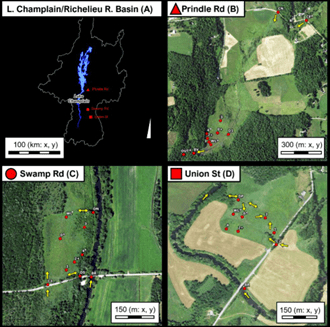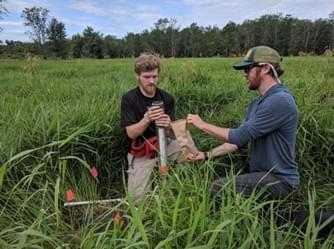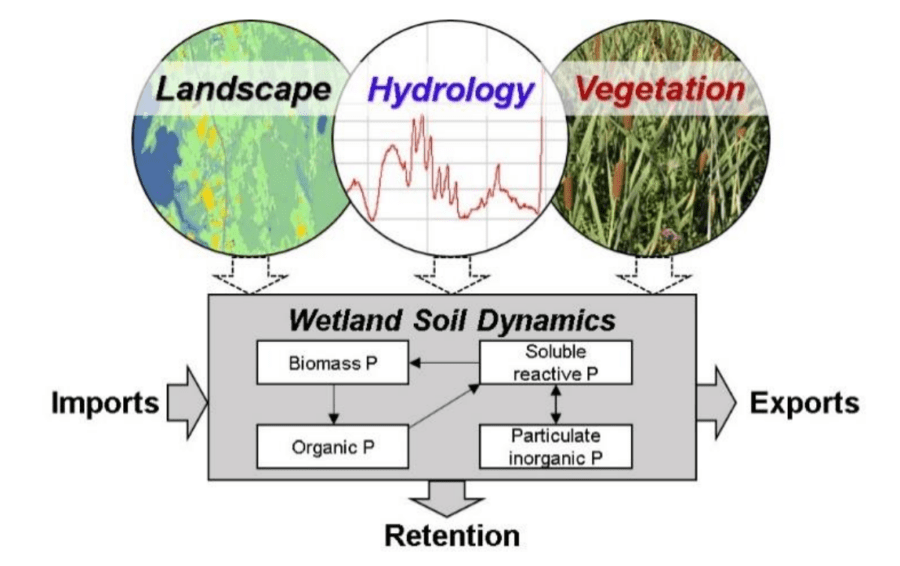Quantifying phosphorus retained by restored wetlands in the Lake Champlain Basin
Project Summary:
Over three years from 2019-2021, a UVM-based research team used field studies in Otter Creek and Lewis Creek watersheds, lab experiments, and process-based modeling to determine the extent to which restored wetlands retain phosphorus and can contribute to phosphorus loading reduction goals for Lake Champlain.
Watershed managers have targeted wetland restoration of previously farmed land as one nature-based approach to reduce phosphorus loading because it has been established that functioning wetlands retain nutrients in general. However, previous to this LCBP-funded study, there were no studies that quantified phosphorus retention on wetlands that were restored from previously farmed lands in the Northeast U.S.
The project team measured multiple phosphorus stocks and fluxes during three floods at three restored wetlands and combined this with information from a peer-reviewed literature review to form a process-based model. The model was used to determine phosphorus storage and loss under multiple site characteristic and restoration scenarios and to determine where and in which conditions phosphorus retention would be greatest.
Key results:
- Using realistic model assumptions, net phosphorus retention in restored wetlands was approximately 0.1 g phosphorus m-2 yr-1 (1 lb phosphorus acre-1 yr-1). If reduced phosphorus loading from restoring former agricultural land use is also factored in, the overall estimated net phosphorus load reduction benefit was 0.2 – 0.3 g phosphorus m-2 yr-1 (2 – 3 lbs phosphorus acre-1 yr-1).
- The restored wetlands included in this study were generally phosphorus sinks rather than sources, and very few model scenarios indicated net total phosphorus loss from the restored wetlands.
- Depending on model scenarios, the net retention or loss of soluble reactive phosphorus varied greatly and represented a loss on average. This suggests that legacy phosphorus from restored farm fields has the potential to be released in soluble form, depending on site-specific conditions.
- The model indicated a function of wetlands to serve as a buffer to change in soluble reactive phosphorus concentrations. As upstream soluble reactive phosphorus concentrations decreased in modeling scenarios, wetlands sediments released more soluble reactive phosphorus to come into equilibrium with incoming waters. This has important implications for understanding watershed-scale restoration and management to reduce phosphorus loading.
Other takeaways:
- Because results indicate that basing phosphorus retention on particulate phosphorus trapping alone would have overestimated phosphorus reduction benefits, this work highlights the importance of considering both particulate and dissolved forms of phosphorus for wetland restoration and other watershed management practices.
- Dissolved oxygen and periphyton dynamics were not represented in the process-based wetland model. Therefore, soluble reactive phosphorus loss may be overestimated if periphyton uptake reduces loss during periods of flood inundation.
- This study makes important progress toward understanding the benefits and challenges of wetland restoration in the Lake Champlain Basin.


